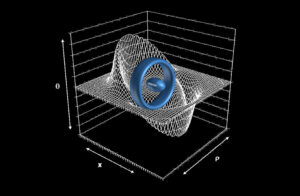Two astrophysicists have described the first feasible model of warp drive for spacecraft: in the future will we really be able to travel in space like Captain Kirk?
Is the warp drive just science fiction? No, at least in theory! Two astrophysicists – the Swedish Alexey Bobrick and the Italian Gianni Martire – have described the first feasible model of warp drive for a spacecraft. To understand the scope of this “discovery” it is necessary to take a step into the world of science fiction. Warp drive is a type of propulsion invented by the authors of the TV series Star Trek. It allows spaceships to travel at super-speed, that is higher than the speed of light, thanks to a unique mechanism of its kind. In practice it is a system that does not actually push the aircraft forward, but deforms space-time by creating a distortion that shortens the distance to be traveled. Basically, the warp engines contract the space in front of the spacecraft and expand it behind it. To understand the meaning of this theory let’s imagine an elastic fixed between two nails and an ant walking on it. If the elastic is not touched, the ant must walk for all its length to move from one nail to another. If the rubber band is shortened in front of the ant (and consequently enlarged behind it), the animal will be able to go from nail to nail covering a path less than the actual length of the rubber band. In Star Trek, the warp engine is used as a narrative device to justify the very long journeys traveled in a short time by the spacecraft of Captain Kirk and partners. It seems, however, that at the base of this science fiction propulsion mechanism could be something real.
Read also → Orbital Assembly will build the first luxury hotel in space
The warp drive of Bobrick and Martire

You might also be interested → The Pentagon has launched a solar panel that produces and sends energy from space